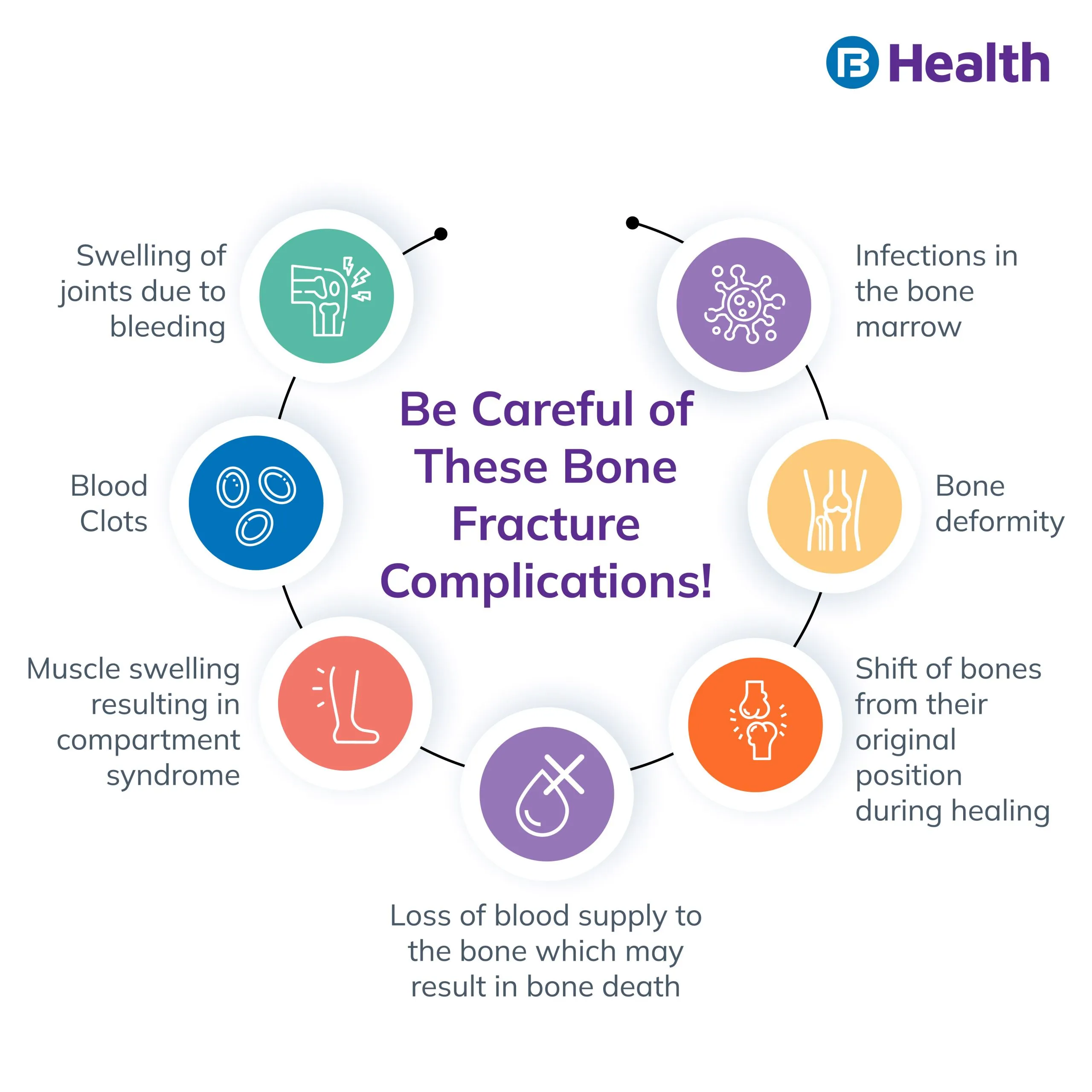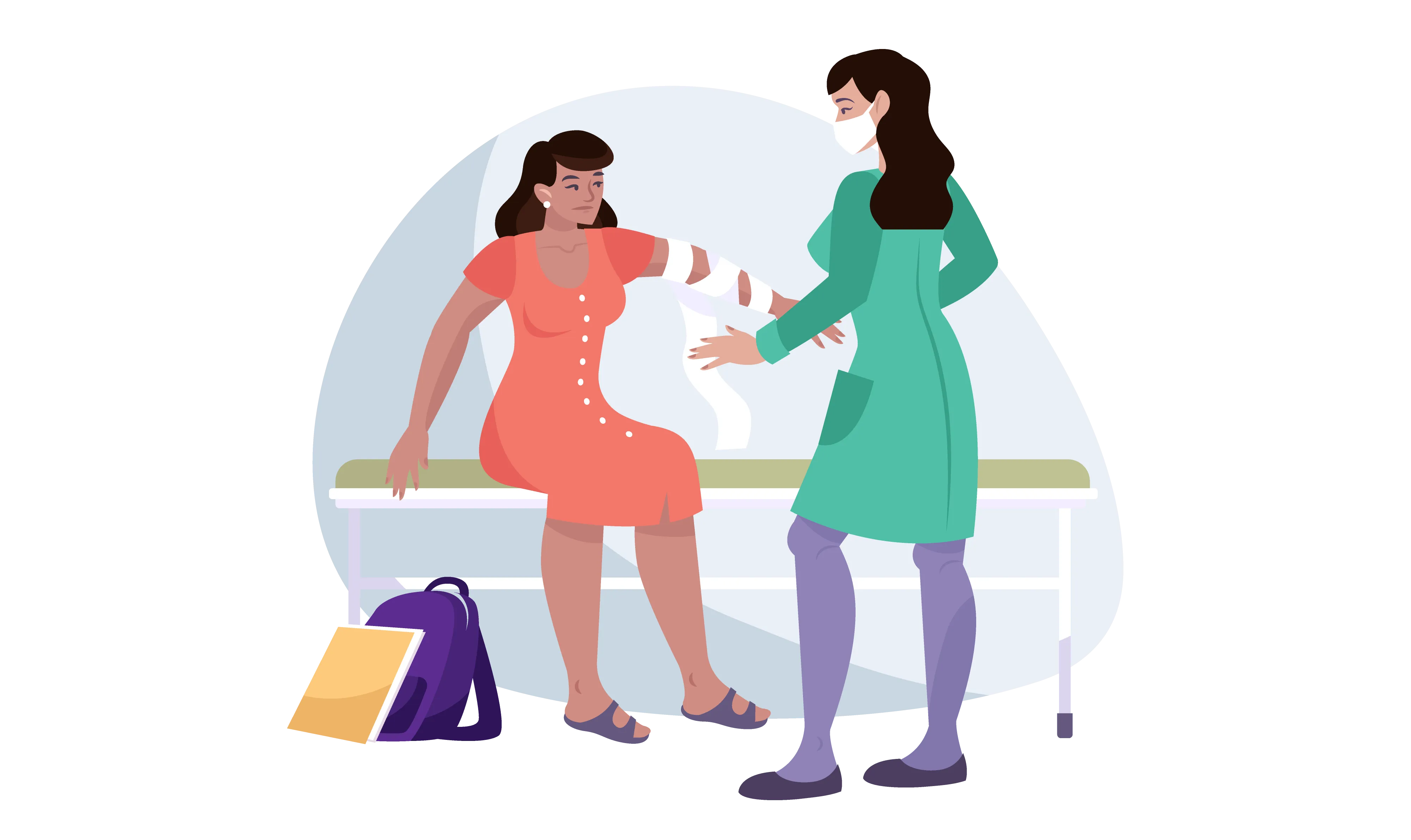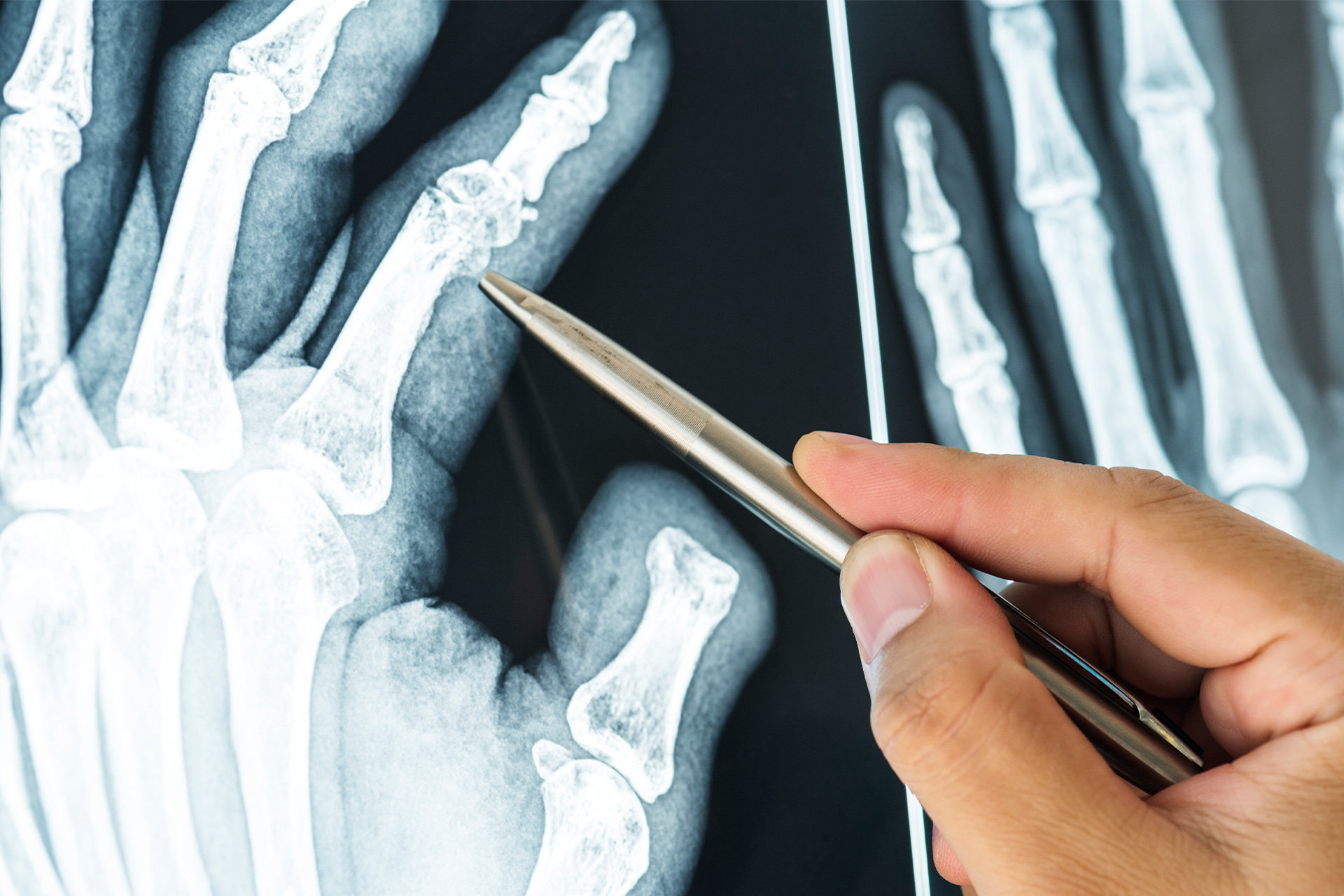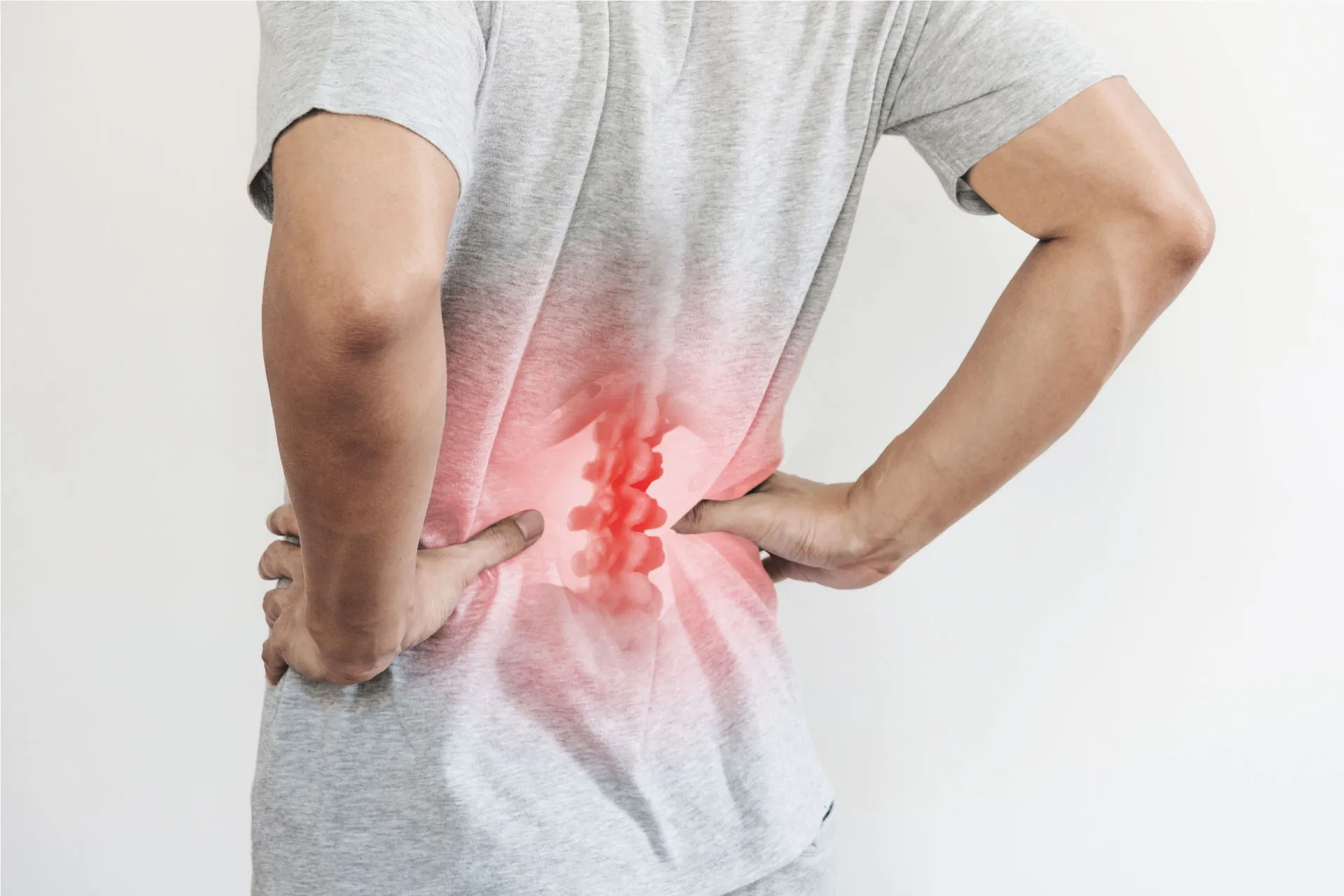Orthopaedic | 6 min read
Fracture in Bones: Causes, Types, Symptoms and Treatment
Medically reviewed by
Table of Content
Synopsis
When there is a break in your bone, it is called a fracture. Due to bone fracture, the continuity of the bone breaks. Read to understand each type of fracture and how it affects your bone health.
Key Takeaways
- A fracture happens when your bone experiences severe impact
- Bone fracture occurs due to accidents or because of weak bones
- In a hairline type of fracture, only a thin part of bone gets affected
The fracture occurs when your bone breaks and loses its continuity. In most cases, the prime reason for a fracture is the severe impact caused on a bone. When a bone fracture occurs due to certain existing medical conditions like cancer or osteoporosis, it is called a pathological fracture. A bone fracture may be caused either due to accidents or injuries [1].
In simple words, when the shape of your bone changes due to the high impact, it is called a bone fracture. The risk of getting a fracture increases with age. Broken bones are common and less risky during childhood, but a bone fracture can become riskier as you age. This is because your bones tend to get brittle when you grow old.
Approximately 4.4 lakh people in India experience a fracture every year. What’s more shocking is that India holds second place in the world for the maximum number of hip fracture cases. This could be due to the increasing number of osteoporosis patients in India. A study confirmed that the prevalence of hip fractures among the Indian geriatric population may increase up to 6.26 million by the year 2050 [2].
While vitamin D deficiency forms the major cause of osteoporosis, proper intake of calcium supplements can improve bone health, especially in women. Another survey conducted in urban India revealed urban cities to have a higher incidence of bone fractures. Approximately 69% of people experience a bone fracture. To understand more about the types of fracture, symptoms, and treatment, read on.
 Additional read: Can Vitamin D Prevent Autoimmune Diseases?
Additional read: Can Vitamin D Prevent Autoimmune Diseases?Fracture of the Bone Different Types
There are various fracture types you should be aware of. In case of a hairline fracture, only a thin part of your bone gets fractured. However, if there is a break on the long axis of your bone, it is called an oblique type of fracture.
There’s another type called Colles fracture, in which the wrist of your bone breaks. This type of fracture is a serious one and requires immediate medical attention. Colles fracture happens when you fall and land yourself on an outstretched hand. This fracture results in the breakage of your wrist and hand bones.
Another type of fracture called comminuted fracture causes a complete shattering of your bones. The impact of a comminuted fracture is so high that it breaks your bone into several pieces. Be it a Colles fracture, comminuted fracture, or any other type, remember to seek medical attention immediately to avoid further damage.
There are chances for your joints to dislocate. Joints are points where your bones meet. This is called fracture dislocation. During a bone fracture, if one piece of your bone causes a severe impact on any other bone, this type of fracture is referred to as an impacted fracture.
If you experience a muscle pull on your bone due to which it breaks, this is known as an avulsion fracture. In case you get a fracture along the longitudinal section of the bone, it is called a longitudinal fracture.
In the greenstick type of fracture, only one side of your bone fractures partially. However, the other part of the bone can easily bend itself. When your bone breaks in a straight manner, it is known as a transverse fracture.
A common type of fracture seen in athletes is called a stress fracture. This occurs due to the excessive strain on your bones. Now that you are aware of different types of bone fractures, be cautious and seek immediate medical help when you experience any discomfort or pain.

Fracture Symptoms
Note the following symptoms of bone fractures and meet an ortho doctor immediately if required.
- Inability to function using the affected area
- Protrusion of bones from your skin
- Extreme pain in the affected area that makes it difficult for you to move or apply pressure
- Change in the appearance of bone structure
- Skin discoloration around the injured area
- Loss of blood if the type of fracture is open
- Severe bruises and swelling around the affected area
If your fracture type is severe, you may also faint or feel dizzy. In some cases, you can feel nauseous too.
Fracture Causes:
There are many causes for getting a fracture. Age plays a vital role as your bone density tends to decrease with increasing age. Existing health conditions, an accident, the excessive use of bones, or any other physical trauma can also contribute to a fracture. While healthy bones can withstand high impact, they can break easily with extremely forceful impact. To improve your bone health and avoid fracture, make sure to include calcium and vitamin D supplements in your diet.
Additional read: Nutrition for Immunity
Fracture Diagnostic Methods:
An ortho specialist may physically examine you after assessing your fracture symptoms. You’ll be asked about the intensity of your pain and how the injury happened. You may have to take an X-ray to determine if there is a fracture. If the X-ray image of your fracture is not clear, you may have to undergo the following imaging studies.
- Magnetic resonance imaging
- Computerized tomography
- Bone scan
These diagnosis methods will help your doctor understand the severity of your fracture and devise a suitable treatment plan.
Fracture Treatment:
Healing of your bone occurs naturally. In order to reduce the intensity of the fracture, your doctor may join the broken bone ends. This depends on the severity of your bone fracture. In case of a severe one, you may have to undergo surgery. However, if it is a small injury, the ortho specialist manipulates the area externally to align the bones.
Few methods used for aligning broken bones are:
- Placing external fixings
- Fixing metal screws and plates
- Placing rods and nails in between bone cavities
- Fixing braces or putting on casts
When a cast or splint is used, it provides support to the broken bone and allows it to heal naturally. While splint gives protection only to a single side, casts ensure provide complete hard protection on the injured area.
While bone fractures are common, you can reduce the risk by modifying your lifestyle. Eating foods rich in calcium and exercising daily can improve the health of your bones. If you are facing any pain in your bones or any other conditions like scoliosis or bursitis, you may connect to reputed orthopedic surgeons on Bajaj Finserv Health. Book an online consultation via app or website to ease your bone or joint discomfort. Remember, bones and the spinal cord form the skeletal system. Any injury to them can affect your physical well-being. Address your symptoms on time and stay fit as a fiddle!
References
- https://www.nhp.gov.in/disease/fracture-bone-fracture
- https://www.ncbi.nlm.nih.gov/pmc/articles/PMC6372827/
Disclaimer
Please note that this article is solely meant for informational purposes and Bajaj Finserv Health Limited (“BFHL”) does not shoulder any responsibility of the views/advice/information expressed/given by the writer/reviewer/originator. This article should not be considered as a substitute for any medical advice, diagnosis or treatment. Always consult with your trusted physician/qualified healthcare professional to evaluate your medical condition. The above article has been reviewed by a qualified doctor and BFHL is not responsible for any damages for any information or services provided by any third party.




